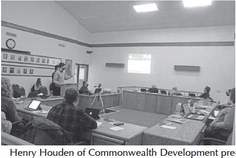Housing proposals show path for the future


If the city of Medford wants to maintain what it now has as far as jobs, industry and retail, the community will need to grow. That growth will require adequate, affordable housing...


If the city of Medford wants to maintain what it now has as far as jobs, industry and retail, the community will need to grow. That growth will require adequate, affordable housing...